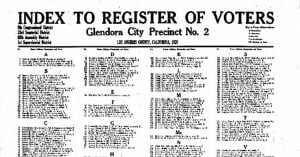Windmills, Tulips, and Wooden Shoes: A Guide to Dutch Surnames
Exploring your Dutch ancestry and family history is made easier with an understanding of Dutch surnames and their origins.
 The Netherlands: a small country with enormous cultural and historical impact. Located in the heart of northern Europe, the Netherlands produced some of the most renowned contributors to science, philosophy, and the arts during the Renaissance, and was known as a haven of relative tolerance during historical periods of persecution. A founding member of the EU, today it is known for its hundreds of historic windmills, its sprawling fields of tulips, and its bicycle-friendly cities. It has been ranked among the best countries in the world for raising children.
The Netherlands: a small country with enormous cultural and historical impact. Located in the heart of northern Europe, the Netherlands produced some of the most renowned contributors to science, philosophy, and the arts during the Renaissance, and was known as a haven of relative tolerance during historical periods of persecution. A founding member of the EU, today it is known for its hundreds of historic windmills, its sprawling fields of tulips, and its bicycle-friendly cities. It has been ranked among the best countries in the world for raising children.
If you have any ancestral surnames linking your family to this region, you may be wondering what those surnames mean, how they developed, and what they might be able to tell you about your ancestors. In this article, we’ll explore the common origins and meanings of Dutch surnames and the historical and cultural context in which they developed.
Patronymics
A patronymic name was the practice of calling a person “son of” or “daughter of” their father. An example of this would be Jan Dirksen, meaning Jan, son of Dirk. The -sen suffix could also be shortened to sz, z, se, and x (e.g., Dirks, Dirkse, Dirkx, etc.). Likewise, a woman would be called Dirksdochter, meaning daughter of Dirk, but could also use the abbreviated suffixes d, dr, s, se, sen, sens, and x (e.g., Dirks, Dirkse, Dirksdr, etc.). The practice of using patronymic names as a person’s unique identifier is common throughout recorded history. It was effective for identifying which father a person belonged to within a community, but it meant that a family’s “surname” changed each generation depending on the name of the father.
Patronymics were in common usage in the Netherlands until the Napoleonic Wars at the turn of the 19th Century. During that time the French invaded (1795) and ultimately annexed the Netherlands in 1811. At that time civil authorities began the mandatory practice of recording births, marriages, and deaths and each family was forced to adopt a distinct surname.
The instituting of fixed surnames makes it much less difficult to organize families and prove generational connections today. It was also fortuitous that women’s maiden names were nearly always included in records from the Netherlands after Napoleon’s time. Napoleon never knew what a blessing his recordkeeping expertise would be for future generations of Dutch-descended genealogists.
Dutch Surnames
While Napoleon’s edict was certainly meant to simplify and standardize the naming practices in Europe, it got off to a rocky start. Because each person was at liberty to choose his own surname, even within a single family, each brother might have taken a different surname. Ultimately, a surname could be taken from anywhere. Typical sources included unique and sometimes unflattering nicknames, a person’s patronymic, their father’s patronymic, a place of origin, an occupation, or a position within the community or within their own family.
Name adoption registers (naamsaanneming registers) were created by each municipality and can be helpful in researching families during the transition period between patronymics and fixed surnames. However, not all registers have survived. Other than this time period, surname changes in the Netherlands were extremely rare.
Dutch Surname Prefixes
Dutch surnames based on locations usually include prefixes like de (the), van (from), van de, van der, van den (from the), or te, ter, ten (on). It was often the case that when a Dutch immigrant came to the United States, or other non-Dutch speaking countries, these prefixes would become lumped into the surname. As an example, Van der Hof would become Vanderhof in an English-speaking country. Because these prefixes would not be considered as part of the actual surname to a native Dutch speaker, genealogical databases often ignore prefixes. Thus, it would be important to search a database from the United States for all versions of Vanderhof (including phonetically similar spelling variations), but a database from the Netherlands would only reference this surname as Hof, leaving off the prefixes. A single surname can often be found under many different spellings in different documents.
Location-Specific Surnames
Surnames in the southern part of North Holland province were similar to those found in South Holland and Utrecht. Because Amsterdam was a large city, people from other areas migrated there, particularly with the Industrial Revolution bringing factory work to the cities. Many surnames in this city originated in other areas, including Flanders, Friesland, and Germany. Place names and geographic features were commonly taken as surnames in Utrecht (e.g., van Doorn, van Schaik, van Vliet, and van den Brink). Flemish and Huguenot surnames were common in Zeeland. And lastly, many surnames common in the larger cities of South Holland were the Dutch versions of French and German surnames.
Many of the Dutch provinces were home to surname prefixes or suffixes common only to that area. This can make it easier to locate your ancestor’s province or area of origin. The following table includes these region-specific names.
| Province | Surname Prefixes | Surname Suffixes |
| Groningen | sema, tjer, huis, ker | |
| Friesland | a, ma, sma, stra, inga | |
| Drenthe | ing(h)e, in(e)k | |
| Overijssel | ten, ter | ing(h)(e), in(c)k, huis |
| Gelderland | Klein, Groot | in(c)k, ing |
| North Holland | sz, x | |
| South Holland | van, van de(n), van der, ver, de, den | |
| Zeeland | de, d’, ver | sons, aert, g(h)e, se |
| Utrecht | laar, laer, horst, schot(en) | |
| North Brabant | mans, ers, ens | |
| Limburg | mans, ingen |
Some examples of surnames using these prefixes include: ten Bokkel, ten Broek, ter Horst, Klein Rooseboom, Groot Rooseboom, de Groot, van der Meer, and van der Kolk.
Examples of surnames using these suffixes include: Veenhuis, de Bakker, Decker, Rodemaker, Boomsma, Aardsma, Brink, Abbink, van Cruijningen, Jansz, Danielsz, Abelsons, Gerritsen, Gouswaert, ter Horst, Kortschot, and Veneklasen.
Dutch Surname Databases
Several years ago, the Meertens Institute in Amsterdam created a database of about 320,000 Dutch surnames, including information about their meanings and origins. Today this database is maintained (and is still being expanded) by the Central Bureau of Genealogy in The Hague. The database is searchable in Dutch or English. Just type your Dutch surname into the search bar to learn the meaning of your surname.
If you’re ready to dive into exploring your Dutch heritage, there’s no better time than the present. With a solid understanding of Dutch surname origins and naming patterns, you’ll be ready to start pouring through records to find your family story. For more information on researching your Dutch ancestors, check out our previous article, 4 Pro Tips for Finding Dutch Family History Resources. Happy searching!
Our experts have the knowledge and experience you need to help navigate your Dutch ancestry. Our global network of researchers extends deeply into The Netherlands and the Low Countries as a whole, meaning we can access records necessary to extend your family history as far as possible. Contact us today for a free quote!
[1] “Funny Dutch Names and the Story Behind Them,” Expatica, https://www.expatica.com/nl/about/culture-history/funny-dutch-names-and-the-story-behind-them-102043/, accessed December 2019



































